As a working professional, I rely on my gear and need it to perform in all conditions. Recently, I was given the opportunity to field-test the new Tamron 150-500mm f/5-6.7 Di III VXD. It may just surprise you, as it did me.
Over the years, camera systems evolve and change. It should follow suit that so do lenses. Mirrorless cameras are not only here to stay but dominating the market more strongly each year. As a new technology, however, the lens options for mirrorless cameras remain slim. For wildlife or sports photographers who need telephoto lenses, the choices are beyond meager.
 As a wildlife photographer using the full frame Sony mirrorless a7R IV, I need reach to capture images of animals both large and small, near and far. This is why telephoto zoom lenses are my preferred choice when out in the field. The flexibility of a zoom lens allows me the ability to adapt and pivot to changing moments in an instant. Because I am photographing fickle and often skittish wildlife, I need a reach of at least 500mm for what I do. Until now, the only full frame mirrorless options that existed were the native Sony 200-600mm or using a converter to adapt a Canon mount lens. That gives you two options, that’s it. Enter into the ring a new contender, the Tamron 150-500mm f/5-6.7 Di III VXD Lens for Sony E.
As a wildlife photographer using the full frame Sony mirrorless a7R IV, I need reach to capture images of animals both large and small, near and far. This is why telephoto zoom lenses are my preferred choice when out in the field. The flexibility of a zoom lens allows me the ability to adapt and pivot to changing moments in an instant. Because I am photographing fickle and often skittish wildlife, I need a reach of at least 500mm for what I do. Until now, the only full frame mirrorless options that existed were the native Sony 200-600mm or using a converter to adapt a Canon mount lens. That gives you two options, that’s it. Enter into the ring a new contender, the Tamron 150-500mm f/5-6.7 Di III VXD Lens for Sony E.

Key Features
• 225-750mm equivalent on APS-C cameras
• Aperture Range: f/5-6.7 to f/22-32
• Low-dispersion and aspherical elements
• VC image stabilization with three modes
• BBAR-G2 and fluorine coatings
• VXD eXtreme-Torque Drive linear AF motor
• 82mm front filter size
• Moisture-resistant construction
• Rounded seven-blade diaphragm

Design and Features
The Tamron 150-500mm f/5-6.7 Di III VXD Lens for Sony E is a beast of a lens in a pleasantly compact package. At just 8.3 inches (209.6mm) at 150mm and 11.1 inches (283mm) when fully extended to 500mm, this lens is designed for photographing on the go. I can easily fit the lens attached to my Sony a7R IV in any of my camera bags. It is light at 4.15 lbs (1.88 kg) and balances well with the feel of a mirrorless camera body. Both this small form factor and minimal weight make it perfect for photographers like me who prefer to handhold their kit.
 To further assist photographers who handhold their gear is a super robust Vibration Compensation system offering multiple modes of image stabilization. There are three modes, with a switch on the side of the lens to flip between them as needed: Mode 1: Standard, Mode 2: Exclusively for Panning, and Mode 3: Framing Priority. The latter, framing priority, is an exciting feature that may be a game-changer. Select this mode, and the lens will help you keep your subject in the frame. This is invaluable when you are photographing fast-moving and erratic subjects like birds in flight or galloping wild horses.
To further assist photographers who handhold their gear is a super robust Vibration Compensation system offering multiple modes of image stabilization. There are three modes, with a switch on the side of the lens to flip between them as needed: Mode 1: Standard, Mode 2: Exclusively for Panning, and Mode 3: Framing Priority. The latter, framing priority, is an exciting feature that may be a game-changer. Select this mode, and the lens will help you keep your subject in the frame. This is invaluable when you are photographing fast-moving and erratic subjects like birds in flight or galloping wild horses.
 While intended for the full frame Sony camera, when paired with an APS-C format camera body, this lens offers a powerful 225-750mm equivalent focal length.
While intended for the full frame Sony camera, when paired with an APS-C format camera body, this lens offers a powerful 225-750mm equivalent focal length.

In the Field
In testing this lens, I really wanted to put it through its paces. I first took it out locally while hiking to photograph birds. That was when I first began to appreciate the petite size and weight, which I cannot express enough are so valuable to a walkabout lens. I found the lens to be zippy in focusing on warblers and other small birds that don’t sit still for long. The lens was able to quickly pick up on my moving subjects and changing focus points even when a small bird was in dense brush or a leaf-covered tree. It was time to move on to new subjects and more intense conditions.
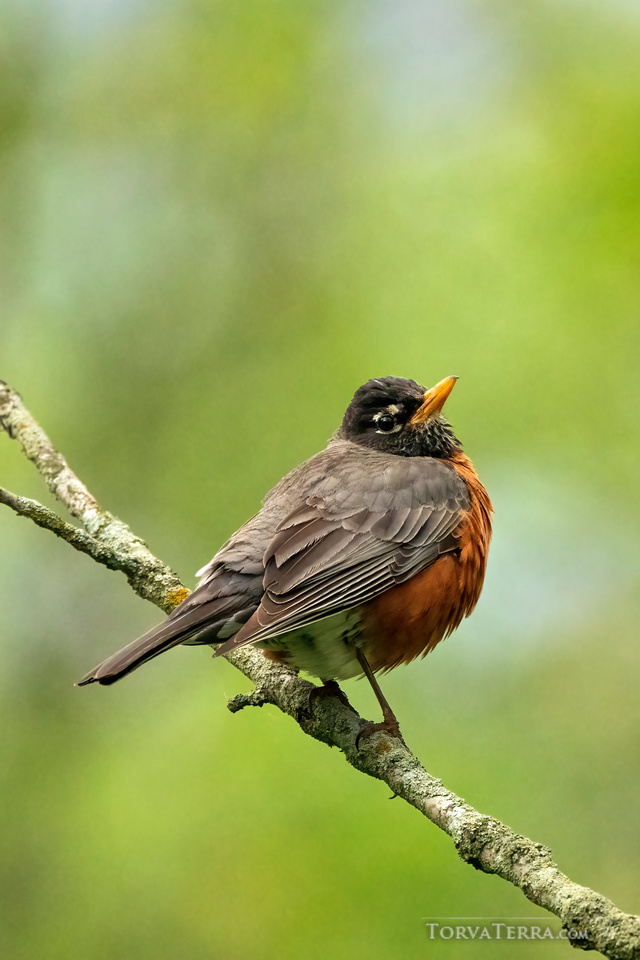
 For the grand finale, I took the lens on a five-day camping trip to a barrier island to photograph wildlife. This was the real deal, with thunderstorms, windblown sand, misty mornings, and at times, harsh scorching sun. These were challenging light conditions, to say the least. I am still nursing my sunburn as I write.
For the grand finale, I took the lens on a five-day camping trip to a barrier island to photograph wildlife. This was the real deal, with thunderstorms, windblown sand, misty mornings, and at times, harsh scorching sun. These were challenging light conditions, to say the least. I am still nursing my sunburn as I write.

 On this trip, I photographed a variety of wildlife, from horses to shorebirds, even tiny plover chicks. The lens impressed me in its ability to keep up with a demanding workload in a multitude of different scenarios. Even wild horses charging down the beach were captured in sharp detail. The lens latched on to my subject with lightning speed, and I never found it hunting or missing and mistaking my background for my intended subject.
On this trip, I photographed a variety of wildlife, from horses to shorebirds, even tiny plover chicks. The lens impressed me in its ability to keep up with a demanding workload in a multitude of different scenarios. Even wild horses charging down the beach were captured in sharp detail. The lens latched on to my subject with lightning speed, and I never found it hunting or missing and mistaking my background for my intended subject.
 A favorite moment was when one wild mare tucked deep in a clearing of the maritime forest suddenly laid down and decided to roll. I quickly knelt down to get a low angle as her back hooves kicked up a cascade of sand like a burst of fireworks. The lens was able to perfectly capture the moment and freeze each grain of sand. That was when I knew the Tamron 150-500mm lens was a force to be reckoned with.
A favorite moment was when one wild mare tucked deep in a clearing of the maritime forest suddenly laid down and decided to roll. I quickly knelt down to get a low angle as her back hooves kicked up a cascade of sand like a burst of fireworks. The lens was able to perfectly capture the moment and freeze each grain of sand. That was when I knew the Tamron 150-500mm lens was a force to be reckoned with.
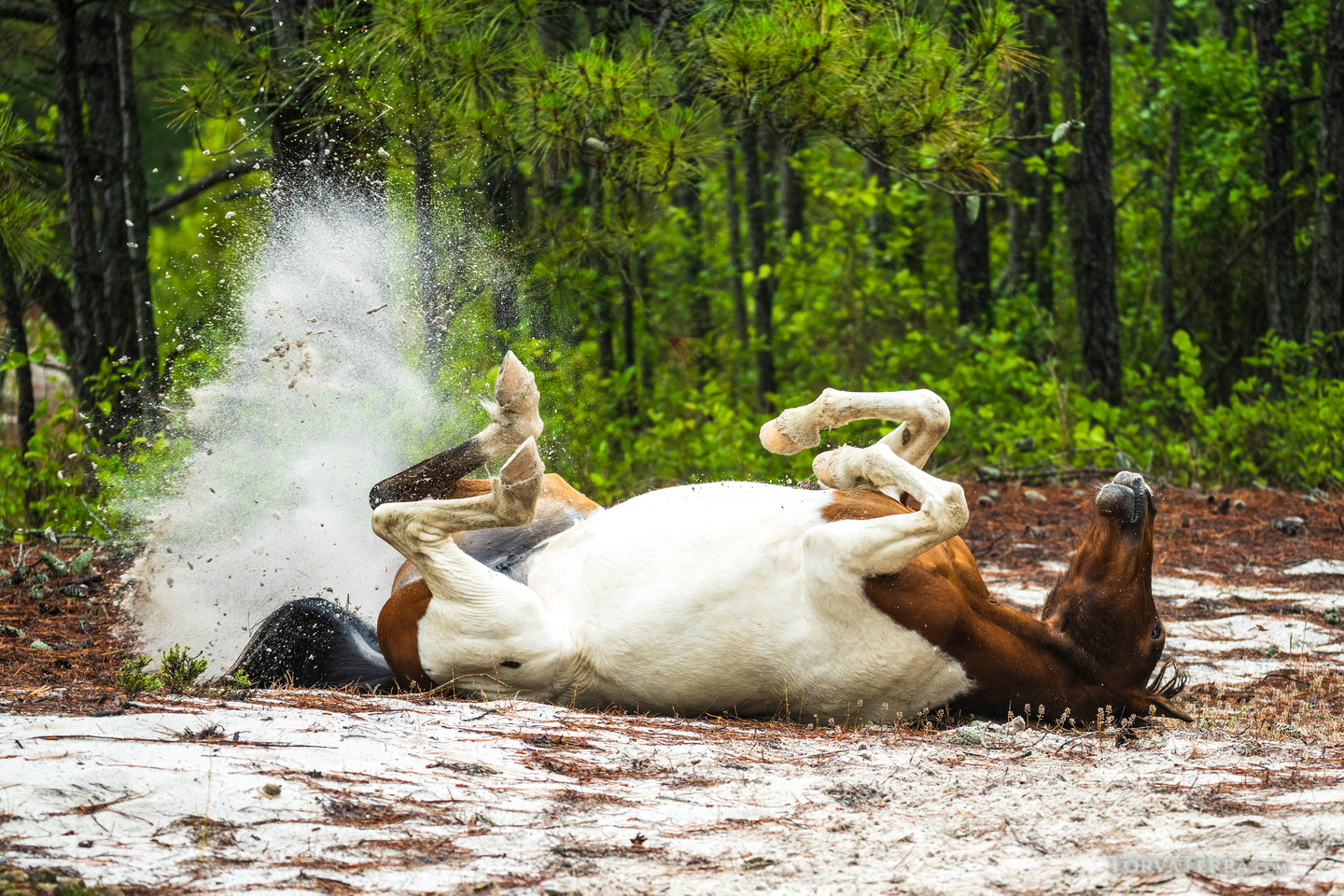
What I Enjoyed Most About the Tamron 150-500mm f/5-6.7
Overall, the true test for me was using the lens wide open, f/6.7 at 500mm. When photographing wildlife, whenever possible, I am at their eye level. Not only is this angle of view more pleasing, but it also enhances the effect of a narrow depth of field. With a thin focal plane, the foreground and background are blurred out into a fine, creamy effect. The contrast between a well-executed bokeh and a sharp subject is integral to my style of photography. You will often find me laying out flat on the ground to capture the perfect wildlife photograph. A keen eye can spot that technique in most of these photographs.


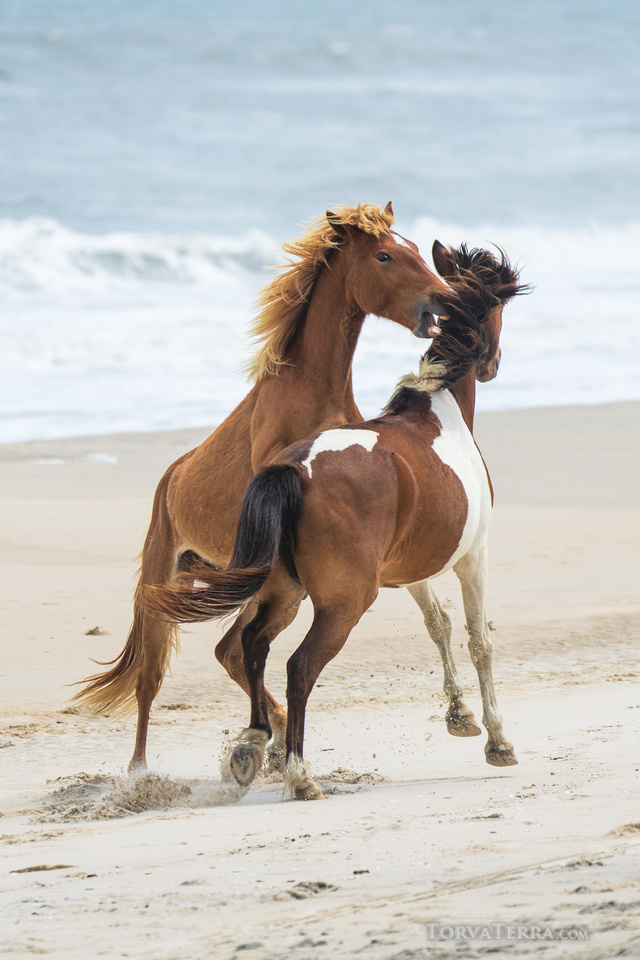 So, how did this lens hold up to the bokeh test? On paper, I expected f/6.7 to not create the type of bokeh that I look for. However, this lens honestly surprised me. The backgrounds of my photographs are creamy and vibrant, with the right kind of blur that is pleasing to the eye. I would absolutely add this lens to my kit as a daily tool. Its ability to keep up with moving subjects, light weight, and small form factor is ideal for outdoor photography.
So, how did this lens hold up to the bokeh test? On paper, I expected f/6.7 to not create the type of bokeh that I look for. However, this lens honestly surprised me. The backgrounds of my photographs are creamy and vibrant, with the right kind of blur that is pleasing to the eye. I would absolutely add this lens to my kit as a daily tool. Its ability to keep up with moving subjects, light weight, and small form factor is ideal for outdoor photography.

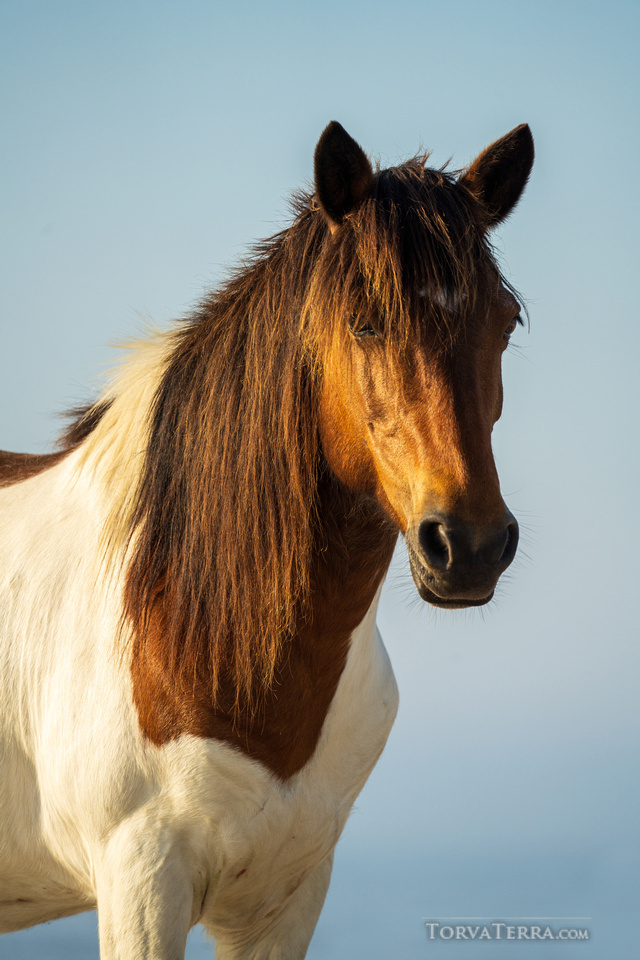
What Didn’t Work for Me
There is very little not to like about this lens. However, one feature that some may love but that didn’t work for me was the zoom lock. To activate this, you pull out on the zoom ring to lock it into place. You pull it back towards you to deactivate and unlock the zoom. I found that with my eye in the viewfinder, blindly reaching to zoom in or out, I would often instead lock my zoom accidentally. I wish that it was a small switch on the side of the lens instead of the entire zoom ring as the way to activate that feature. Perhaps in time, I would get used to it, but a few sessions in, it was too easy for me to lock it by mistake.
The only other thing that I would change about this lens is that the internals are a bit louder than I am used to. I would prefer a more silent operation; however, that is nitpicking a very fine piece of equipment. The photos speak for themselves.
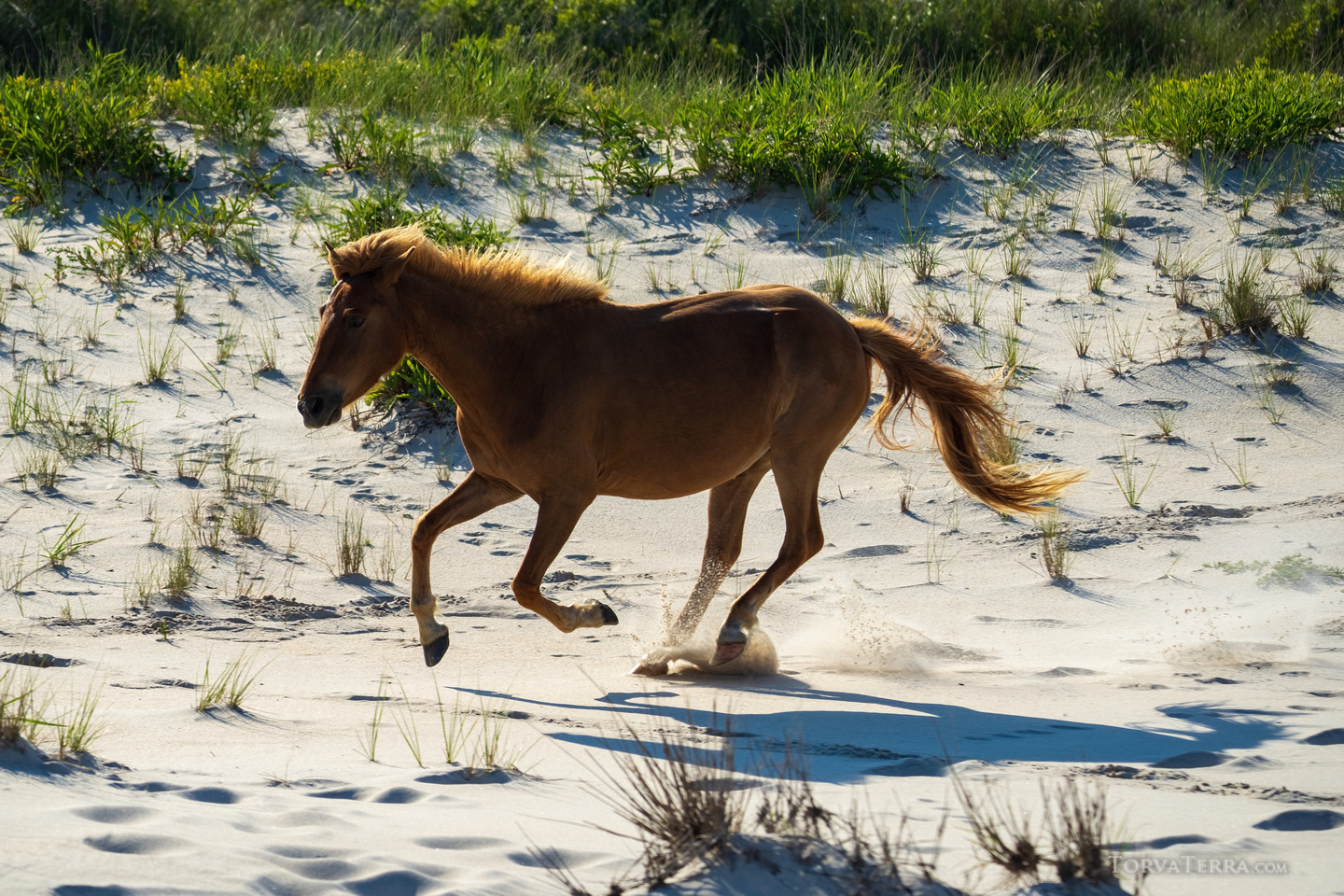
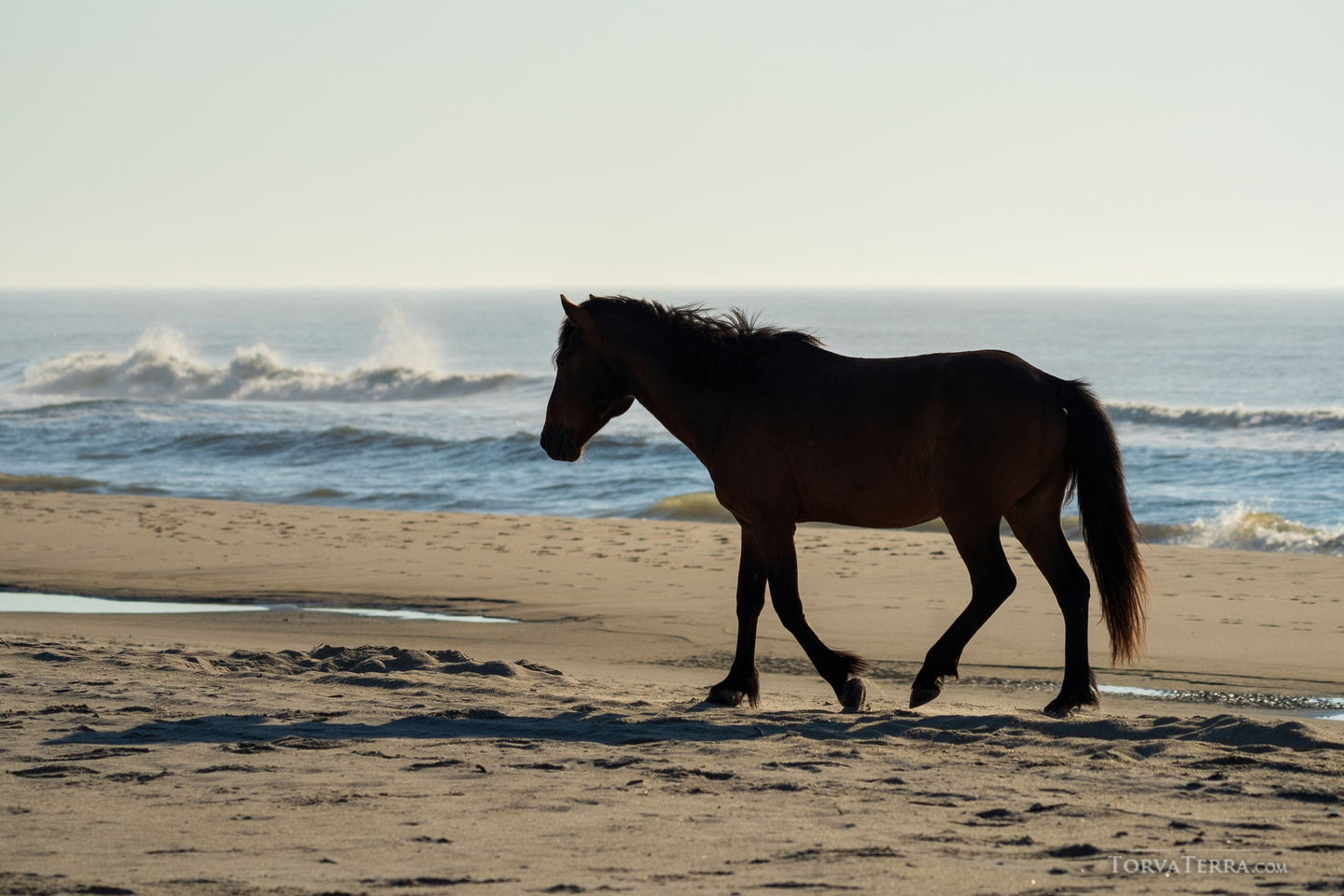
Ordering
If you would like to add the remarkable Tamron 150-500mm f/5-6.7 Di III VXD Lens for Sony E to your kit, B&H is currently taking preorders for $1,399. It is expected to start shipping on June 10th, 2021.







That was a really good, well-written review. Thanks!
One question that came to mind when I started reading the article was,
"Doesn't Tamron already make a 150-600mm f5-6.3 for other mounts?"
I wonder why they didn't just make that existing 150-600mm lens in a Sony E mount. Why make a lens 100m shorter than what they already have? Why make a lens 1/3 stop slower than they already have?
Tamron 150-600mm f6.3 $1,200
Tamron 150-500mm f6.7 $1,400
It seems like this new lens is both shorter and slower than what their customers are already used to. Yet also more expensive. It seems like they're giving you less for the money if you want a Sony E mount than if you want a DSLR mount. I guess I just don't get that.
Hi Tom! Thank you for taking the time to write in. Just for a bit of comparison, the Tamron SP 150-600mm f/5-6.3 Di VC USD G2 for Canon EF is $1,399.00 and on sale for $1,199.00 on BH. However at this time it is out of stock and on back-order. The new Tamron 150-500mm is the same cost at full price, $1,399.00. The lenses differ in size and weight:
Tamron SP 150-600mm f/5-6.3 Di VC USD G2 for Canon EF
- Dimensions (ø x L) 4.27 x 10.24" / 108.4 x 260.2 mm
- Weight 4.42 lb / 2010 g
Tamron 150-500mm f/5-6.7 Di III VXD Lens for Sony E
- Dimensions (ø x L) 3.7 x 8.3" / 93 x 209.6 mm
- Weight 4.14 lb / 1.88 kg, less if you take off the tripod foot
To use the Canon EF mount lens on a Sony body you would also have the added length and weight of the converter.
These are my own thoughts/assumptions: I think that the 150-500mm is intended for the mindset of the mirrorless camera being being more nimble than a traditional DSLR. Therefore they did a trade off of 100mm for a weight and size savings to pair with the lighter camera type.
In a perfect world I would love to see a 50-600mm for Sony that is lightweight, with a drop in filter slot, and has a reasonable aperture. That way as long as I am on wildlife I never have to change a lens. A girl can dream!
Cumberland? One of the coolest places on the planet.
This was in the United States at a barrier island on the east coast. We are fortunate to have several populations of wild horses all along the Atlantic in addition to the more popular herds of the deserts out west.
I bet it is north of Corolla on the outer banks. I am sorry; I couldn’t resist the urge to call it out -it is such a unique spot. Thanks for the review, and you got some great shots!
That is a really good guess! Corolla is a wonderful spot for photographing wild horses near the ocean, however it is not the location where I photographed these. The Corolla horses are mostly bay, black, chestnut, etc. They are considered wild Colonial Spanish Mustangs which are extremely rare and formally listed as critically endangered. In contrast the herds that I photograph are predominantly colorfully marked pintos with some chestnuts and bays sprinkled around. :)
Awe shucks! I thought I had it for sure :)
incredible photos!
Thank you very much Lee!
What a really nice and practical review. This is quality, thank you for this!
Thank you very much for taking the time to comment so kindly Simon! :) I am glad to hear that you found my review helpful.
This was outstanding and helped me with understanding the VC 3 Framing Priority mode. I just received the Tamron 150-500 replacing my Tamron 150-600 A-mount in which I needed to use the adapter to fit with my A7iii. The main issue was the added weight but though I could obtain AF it was really slow and often would not engage. It also rarely allowed for the eye focus which my other full frame lenses provide. I often had to turn my camera on/off multiple times or dis-engage the lens and re-engage it. My last trip this past fall was to specifically photograph the Wild Horses at Teddy Roosevelt National Park. I lost so many action shots to the lens NOT focusing on the horses. But like a previous poster I was a bit surprised Tamron did not maintain a 600mm reach. But I love the feel of this new lens. Thanks again for your outstanding article!!
I just got back from a holiday camping to your lovely comment. Thank you for your positive feedback!
I am so sorry to hear that you lost action sequences from your trip to photograph the horses! Ugh that hurts. Depending on which adapter you are using can greatly affect the focus and sharpness of your photos. I'm glad to hear that you have the correct mount version now, no more adapter! That should clear up your issues and give you piece of mind for your next equine adventure. :) I am still using my adapter with my older lenses and hoping to update sooner than later.